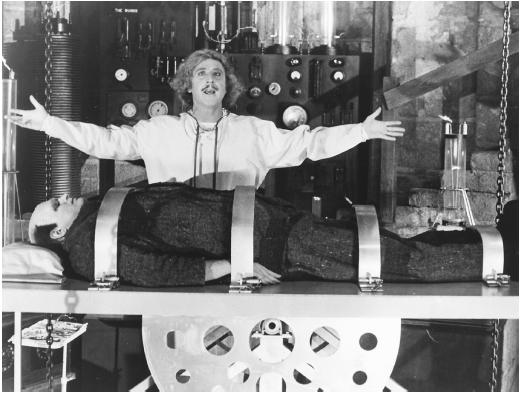How does the body make electricity -- and how does it use it?

Craig Zuckerman/Visuals Unlimited/Getty Images
The electricity produced by our bodies is what allows synapses, signals and even heartbeats to occur. See more heart pictures.
Without electricity, you wouldn't be reading this article right now. And it's not because your computer wouldn't work. It's because your brain wouldn't work.
Everything we do is controlled and enabled by electrical signals running through our bodies. As we learned in intro physics, everything is made up of atoms, and atoms are made up of protons, neutrons and electrons. Protons have a positive charge, neutrons have a neutral charge, and electrons have a negative charge. When these charges are out of balance, an atom becomes either positively or negatively charged. The switch between one type of charge and the other allows electrons to flow from one atom to another. This flow of electrons, or a negative charge, is what we call electricity. Since our bodies are huge masses of atoms, we can generate electricity
When we talk about the nervous system sending "signals" to the brain, or synapses "firing," or the brain telling our hands to contract around a door handle, what we're talking about is electricity carrying messages between point A and point B. It's sort of like the digital cable signal carrying 1s and 0s that deliver "Law & Order." Except in our bodies, electrons aren't flowing along a wire; instead, an electrical charge is jumping from one cell to the next until it reaches its destination.
Electricity is a key to survival. Electrical signals are fast. They allow for a nearly instantaneous response to control messages. If our bodies relied entirely on, say, the movement of chemicals to tell our hearts to speed up when something is chasing us, we probably would've died out a long time ago.
Those crucial signals that tell our hearts to speed up when we're in danger come from a mass of cells in our heart called the sinoatrial node, or SA node. It's located in the right atrium, and it controls the rhythm of our heartbeat and the movement of blood from the heart to every other part of our body. It's our body's natural pacemaker, and it uses electrical signals to set the pace (see What determines the rhythm of your heart?). But our pulse isn't the only thing that relies on electrical impulses generated by our cells. Almost all of our cells are capable of generating electricity.
|
Next Up
|
The starting point is simple: Right now, any cells in your body that aren't actively sending messages are slightly negatively charged. It gets interesting from there.
Human Voltage
Negativity is the natural resting state of your cells. It's related to a slight imbalance between potassium and sodium ions inside and outside the cell, and this imbalance sets the stage for your electrical capacity.
Your cell membranes practice a trick often referred to as the sodium-potassium gate. It's a very complex mechanism, but the simple explanation of these gates, and how they generate electrical charges, goes like this:

Jim Reed/Science Faction/Getty Images
Getting struck by lightning is usually enough to fry your body's electrical system.
At rest, your cells have more potassium ions inside than sodium ions, and there are more sodium ions outside the cell. Potassium ions are negative, so the inside of a cell has a slightly negative charge. Sodium ions are positive, so the area immediately outside the cell membrane is positive. There isn't a strong enough charge difference to generate electricity, though, in this resting state.
When the body needs to send a message from one point to another, it opens the gate. When the membrane gate opens, sodium and potassium ions move freely into and out of the cell. Negatively charged potassium ions leave the cell, attracted to the positivity outside the membrane, and positively charged sodium ions enter it, moving toward the negative charge. The result is a switch in the concentrations of the two types of ions -- and rapid switch in charge. It's kind of like switching between a 1 and 0 -- this flip between positive and negative generates an electrical impulse. This impulse triggers the gate on the next cell to open, creating another charge, and so on. In this way, an electrical impulse moves from a nerve in your stubbed toe to the part of your brain that senses pain.
It's also how the SA node tells your heart muscles to contract, how your eyes tell your brain that what they just saw is the word "brain," and how you are comprehending this article at all.
Since everything relies on these electrical signals, any breakdown in your body's electrical system is a real problem. When you get an electric shock, it interrupts the normal operation of the system, sort of like a power surge. A shock at the lightning level can cause your body to stop. The electrical process doesn't work anymore -- it's fried. There are also less dramatic problems, like an SA node misfire that causes a heart palpitation (an extra heartbeat), or a lack of blood flow to the heart that upsets the pacemaker and causes other parts of the heart to start sending out impulses. This is sometimes what causes someone to die from coronary artery disease, or narrowing of the arteries. If the heart is constantly being told to contract, it never gets in a full contraction, and it can't get enough blood to the rest of body, leading to oxygen deprivation and a possible heart attack or stroke.
|
Blood Battery
Panasonic is looking into using human blood to power electrical devices. It's researching how blood could
break down sugars to generate power like it generates energy for the human body. This type of "human battery" could ultimately power nano-devices implanted in the body. |
With so much electricity jumping around, it may seem like the body is a really great power source. But could human beings really power the Matrix? Probably not. A human body can only generate between 10 and 100 millivolts [source: NanoMedicine]. A cathode ray tube requires about 25,000 volts to create a picture on a TV [source: Physics Factbook]. If the machines could gather millions of electric eels, on the other hand, they'd be well juiced up. A single eel can produce in the area of 600 volts [source: Physics Factbook].
For more information on the human body's electrical system and related topics, including Panasonic's human-battery research, look over the links on the next page.
Lots More Information
Related HowStuffWorks Articles
- What determines the rhythm of your heart?
- Top 5 Heart Attack Symptoms that Should Have You Calling 911
- When do most heart attacks occur -- and why?
- How Heart Disease Works
- How Your Heart Works
- Heart Pictures
- How Fear Works
- How Pain Works
- Could blood be used to power batteries?
- Can house music solve the energy crisis?
More Great Links
- Signalife: Electricity in the Body
- eMedicineHealth: Palpitations
- The Sydney Morning Herald: Power from blood could lead to 'human batteries." Aug. 4, 2003
Sources
- Electricity in the Body. Ask a Scientist.
http://www.newton.dep.anl.gov/askasci/bio99/bio99800.htm - Electricity in the Body. Signalife.
http://www.signalife.com/Pages/WhitePapers/WP-ElectricityInTheBody.pdf - Electricity's Spark of Life. Science News for Kids.
http://www.sciencenewsforkids.org/articles/20031001/Feature1.asp - The Heart Electric System. Children's Heart Institute. http://childrensheartinstitute.org/educate/heartwrk/elechhse.htmPalpitations.
- eMedicineHealth.
http://www.emedicinehealth.com/palpitations/article_em.htm - Power from blood could lead to 'human batteries." The Sydney Morning Herald. August 4, 2003. http://www.smh.com.au/articles/2003/08/03/1059849278131.html







